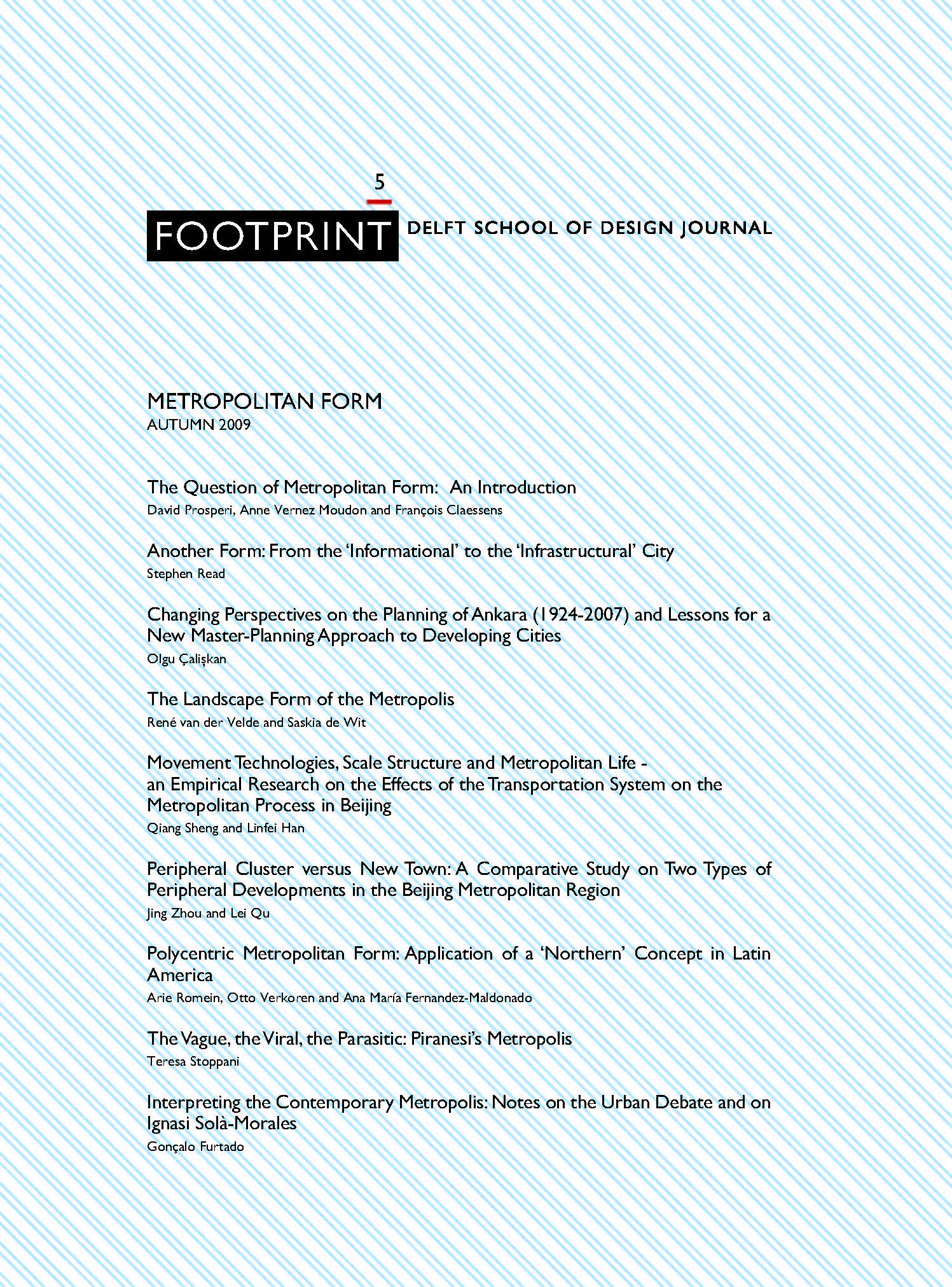Issue # 5 | Autumn 2009 | Metropolitan Form

The fifth issue of Footprint investigates the question of metropolitan form. The necessity to focus on the scale of metropolitan areas is manifest as this is the dominant scale of contemporary global life. The process of urbanisation and the size of urban agglomerations have dramatically increased since the last decades. These dynamics alone demand radically changed thinking about internal spatial organisation and the form of urban regions. Yet, scholarly focus at the regional level has shifted away from spatial thinking of overall form towards issues of governance, socio-economic statistics, and global networks. While these approaches provide insight into contemporary conditions, lost in translation is the question of metropolitan form: what are the characteristics of its spatio-physical structures? What are its distinguishable elements? And what are the factors that determine the transformation of form through time? By addressing the question of metropolitan form we try to extrapolate - scale-up - the research notions and methods of ‘urban morphology’ from the ‘urban’ to the ‘regional’ scale.
Issue's editors: François Claessens and Anne Vernez Moudon




